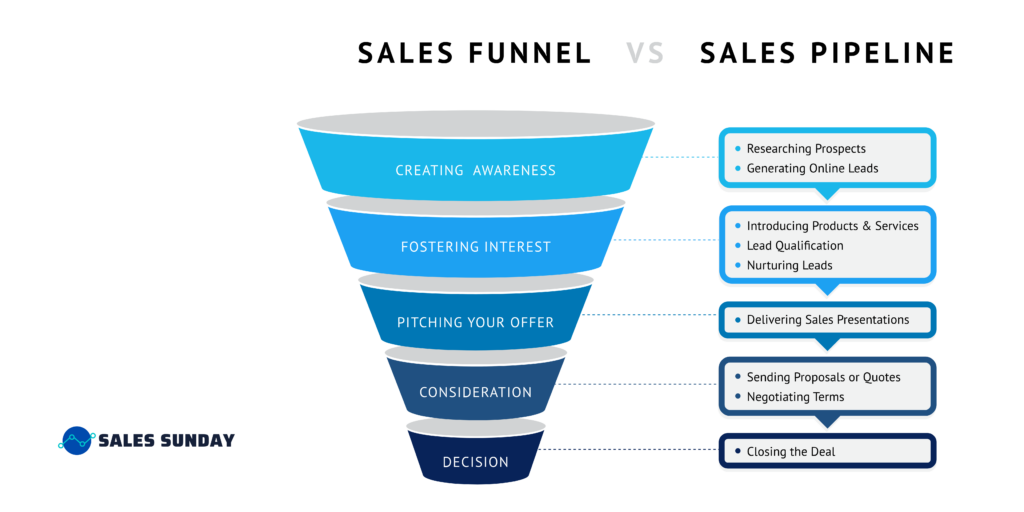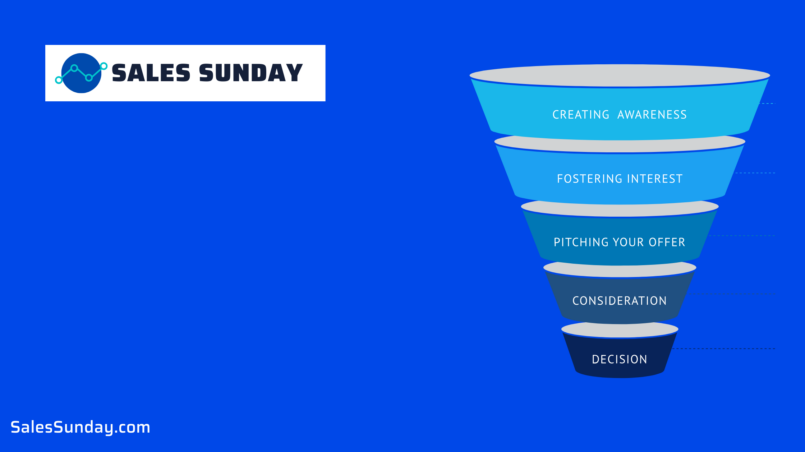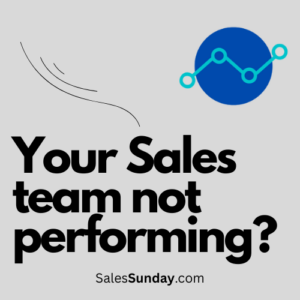There are 7.9 billion people on the planet! Can you make all of them buy your product? Or let’s just take India for that matter. India has a huge 1.39 billion population, how do you target all of them? Can you make your sales reps call them and start pitching your product? Definitely not! You won’t get the results it will be very expensive and inefficient. This is when a Sales funnel comes into play.
What is Sales Funnel?
A sales funnel is a very simple marketing term for the route that potential consumers make, from your target audience to customers. It has multiple phases, commonly referred to as the top, middle, and bottom of the funnel, however, these steps may change based on a company’s sales strategy or sales steps.
Any business owner understands how hard it is in missing a transaction. After weeks of presentations, demos, and pain, the prospect exits the sales funnel without making a purchase.
It occurs. However, it happens less frequently when you have the correct sales funnel management assistance. Many small company sales funnels resemble sieves, with gaps caused by jumbled spreadsheets, sticky notes, missed appointments, and forgotten follow-ups.

Importance of Sales funnel
A sales funnel may assist you in understanding what potential consumers are thinking and doing at each stage of the purchase process. These data enable you to invest in the most appropriate marketing activities and channels, develop the most relevant content at each level and convert more prospects into paying customers.
Looking for the next amazing business opportunity? Take our Lifecycle Marketing Assessment to discover your company’s strengths and weaknesses.
What are the Sales funnel stages?
Prospects move through several phases of your sales funnel from the moment they learn about your product or service until they make a purchase (or don’t). That path through your funnel may differ from prospect to prospect, but in the end, they’ll assess it depending on their degree of interest. They will consider the problem they are attempting to address and undertake competitive research to ensure that your service is the best answer.
Stage 1: Product/ Serice awareness
Figure out who is your target audience (TG). The people who can become your potential buyers are your target audience. Suppose you’re selling an expensive sports car. You will find a place where you can find people who can afford an expensive sports car. It can be online or offline. You want people to know about your car, you advertise it on the internet or put hoarding on the road so that you can attract such people.
The “awareness” level is the first of the sales funnel stages since it is when customers first become aware of your product or service. They may have heard of you through advertising, social media, or simply word of mouth.
Of course, how and why those consumers proceed down the sales funnel is determined by your own sales and marketing skills. Leads in the middle and lower sales funnel phases deserve your full attention since they have progressed from awareness to interest.
A prospect learning about your firm for the first time would be an example of the awareness stage. Maybe they saw one of your advertisements, read your blog, or found your website through a Google search.
Stage 2: Interest
Prospects who are aware of your brand will judge your brand depending on their level of interest once they’ve learned about it. They will consider the problem they are attempting to address and undertake competitive research to ensure that your service is the best answer.
Stage 3: Decision
Prospects will investigate your price and packaging alternatives after learning more about your firm. In this stage, sales websites, webinars, and phone calls can assist persuade prospects to buy.
Stage 4: Action
All of your efforts will be for naught if the prospect does not make a purchase. If they didn’t, the contract isn’t eternally gone. You may use nurturing campaigns to ensure that you remain top of mind.
How to create?
For your sales funnel to exist, you first need prospects who can move through that funnel. Once you have those prospects, you can track behavior and engagement using lead scoring to identify where they are in the funnel.
Here are five steps to help you create a sales funnel:
1. Build a landing page
Prospects will most likely discover about your firm for the first time through a landing page. They will be directed to a landing page if they click on an ad, register for a webinar, or download an ebook. That website should effectively express your company’s identity as well as its distinct advantages (after all, this could be the one and only opportunity you have to wow prospects). Most importantly, ensure that the landing page has a form for prospects to fill out – you want to collect their email address so you can continue to interact with them.
2. Offer something of value
This is the point at which you must provide something to your prospects in return for their email address. A lead magnet, such as an ebook or whitepaper, is a good approach to provide something of value on your landing page.
3. Start nurturing
Your prospects will have progressed from the Awareness stage to the Interest stage at this point. Furthermore, because you have all of their email addresses from the landing page, you may set up an email nurturing series to deliver instructive information about your product.
4. Upsell
As prospects move into the Decision stage, you want to offer anything that can nudge them in the direction of a purchasing decision. This could include a product demo, extended free trial, or special discount.
5. Keep it going
In the Action phase, you’ll either land new customers or hear why prospects aren’t interested in purchasing. Either way, keep the communication going. For new customers, focus on product education, engagement, and retention. For prospects who didn’t make a purchase, build a new nurture series to check in with them every few months.
Find the cracks in your sales funnel stages
Now that you’ve learned how to design a sales funnel, let’s look at why sales funnel management is important. Even extremely strong prospects might fall out of the sales funnel if they are not actively managed. The easiest approach to avoid that loss is to understand the processes in your sales process and assist in making those actions a reality.
You must engage in marketing and prospecting in order to get potential customers into the first stage of your sales funnel. Please take note that phases are, if feasible, divided into two or more steps. A demo could be thought of as a single stage, but in reality, there are several steps involved, including contacting the customer, sending follow-up reminders, doing the demo, and so on. The assistance you need to manage the steps of your own sales funnel will be the same.
After you’ve identified your sales funnel phases, it’s essential to determine where you’re losing potential clients. Sit down with your staff (or, if you’re the CEO, CMO, and head janitor, with yourself) and ask yourself:
- Where in my sales process are the bottlenecks?
- Where do I frequently lose track of prospective clients?
- What are the favorable triggers—the particular behaviors that frequently result in sales?
Last but not least, use software like sales Sundays powerful Sales platform. With Sales Sunday you don’t have to think but read instead. It makes your sales fun with gamification. And AI Sunday will give you suggestions on the bases of machine learning, data science, and algorithm.
For any queries feel free to contact us at salessunday.com.



